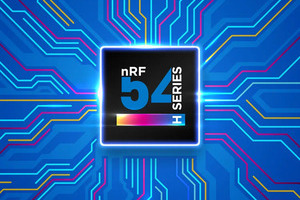Nordic Semiconductor broadcasts that its nRF54H20 multiprotocol system-on-chip (SoC) demonstrates processing producitvity, together with superior processing efficiency. This underscores potential of SoC to allow IoT (web of issues) end-products that had been beforehand not possible.
EEMBC (embedded microprocessor benchmark consortium) ULPMark-CoreMark (ULPMark-CM) benchmarks the processor configured both for max processing productiveness or efficiency, utilizing CoreMark as workload. The nRF54H20’s utility processor has achieved following scores:
- Configured for max processing producitivty: ULPMark-CM rating of 170 with 515 CoreMark. See “Energy, Best Voltage” column in ULPMark-CM score table.
- Configured for max processing efficiency: ULPMark-CM rating of 132 with 1290 CoreMark. See “Performance” column in ULPMark-CM score table.
The rating exhibits that utility processor in nRF54H20 presents a mixture of processing productiveness and efficiency. Most processors are optimised for these attributes, however with nRF54H20 builders can make the most of each, by altering between configurations.
“The results are remarkable. Nordic has consistently set the standard for ultra-low power. By delivering world-leading processing efficiency and unmatched processing power, we’re establishing a new industry norm. The nRF54H20 is our fourth-generation product series. With it, we aim to redefine processing power and energy efficiency. We’re eager to see what Nordic’s customers can create with these wireless solutions.” says Svein-Egil Nielsen, Nordic’s CTO and govt vp of R&D.

The nRF54H20 SoC options a number of Arm Cortex-M33 processors and a number of RISC-V coprocessors optimised for particular sorts of workloads. The nRF54H20 is ready to disrupt market with capabilities of an utility processor designed for heavy processing with minimal energy consumption. Furthermore, different processors in SoC can help with utility processing, such that the general processing efficiency of SoC can be even increased.
Having sufficient processing energy for superior IoT purposes built-in right into a single low energy wi-fi SoC permits a unique method to the design of end-products. A separate general-purpose MCU (micro-controller unit) and a further wi-fi SoC might be changed with a single compact SoC. With this stage of integration, IoT end-products will devour much less vitality, can be smaller, and improvement can be easier.
The nRF54H20’s outcomes in opposition to EEMBC benchmarks deliver optimistic tidings for builders constructing processor-intensive wi-fi designs demanding excessive productiveness. Wi-fi SoCs that may course of knowledge and reply are essential for battery-operated IoT units requiring fast actions similar to industrial automation and healthcare monitoring. Different purposes that may profit from superior processing productiveness and efficiency are superior wearables, good residence units, and different units utilizing machine studying (ML), edge processing, or sensor fusion.
Touch upon this text beneath or through Twitter: @IoTNow OR @jcIoTnow
Author: Janmesh Chintankar
Date: 2023-09-25 03:26:55



